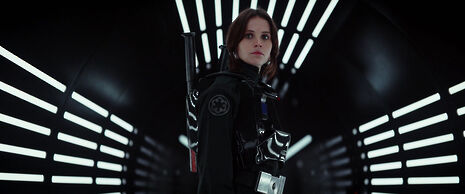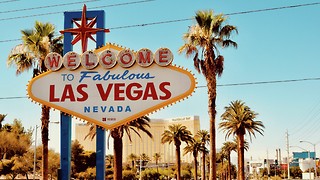Expanded Universe: Gareth Edwards’ Rogue One
The newest Star Wars instalment pays homage to movies past while setting out on a path of its own

One of the most discussed aspects of Rogue One has been its place within the wider Star Wars canon. People have balked when I’ve tried to explain where exactly it sits in the series’ 40-plus-year cinematic saga. So it’s a sequel to the prequel, it’s a prequel to the sequel, but also has nothing to do with last year’s The Force Awakens?
As both the first of three planned non-episodic features under the banner A Star Wars Story and an immediate prequel to the events of the original film, now known as Episode IV: A New Hope, Rogue One has been beset by a battery of competing expectations.
There are those who want it to be bold and daring, as befits a standalone picture sold as a war film in the mould of Saving Private Ryan, but also those who expect a certain level of fan service from a film that ends right where one of the most beloved of all time begins.
“Rogue One makes the jump to hyperspace for what is undoubtedly one of the finest, if not the finest, third acts in Star Wars history”
For the most part, Rogue One succeeds in doing both. As the story of how the Rebel Alliance gets its hands on the plans for the Death Star, the Empire’s moon-shaped super-weapon capable of reducing whole planets to stardust, the film is self-contained enough to appeal to those who don’t know their Y-wings from their U-wings while holding special resonance for those who’ve waited since they were kids for this story to be told. And this is a worthwhile story that is well-told, for the most part. The film’s first 45 minutes suffer from uneven pacing as it jumps from planet to planet in swift succession bringing our motley crew of renegades together, but once assembled Rogue One makes the jump to hyperspace for what is undoubtedly one of the finest, if not the finest, third acts in Star Wars history. It’s difficult not to choke up in the last five minutes.
Felicity Jones heads up the film’s cast as Jyn Erso, a blaster-wielding Joan of Arc who mixes courage with vulnerability, particularly in her relationship with her father, Mads Mikkelsen’s imperial scientist Galen Erso, in a dynamic that keeps the film emotionally grounded. Diego Luna’s Captain Cassian Andor, troubled yet charming, introduces a level of moral ambiguity not previously glimpsed in Star Wars. While the original trilogy presented the Rebels as cardboard cutout good guys, Rogue One delves deeper, asking what actions are acceptable for the greater good and what value ought to be placed on the military chain of command. Forest Whittaker’s extended cameo also offers a peek into the internal politics of the Rebellion (though this is the right kind of politics for a Star Wars movie).
The standout performances, though, were Alan Tudyk and Donnie Yen as sassy Imperial droid K-2SO and blind monk Chirrut Îmwe respectively. Tudyk brings the perfect amount of comic relief, much of it through deadpan humour, while Yen delivers not only great action but also examines the nature of the Force in a world without Jedi. Some protagonists suffered from a lack of exposition and screen-time, notably Riz Ahmed’s Bodi Rook and Jiang Wen’s Baze Malbus, but this didn’t affect the film as a whole, besides an uneven opening act.
Those who watch Rogue One for the much-fêted return of Darth Vader ought not to be disappointed – his appearance is brief but effective, with a scene in the final act that elicited an audible intake of breath from everyone in the cinema followed by massive grins. The film’s primary antagonist, though, is Ben Mendelsohn’s Director Orson Krennic who, despite being under-used, delivers the appropriate amount of menace to proceedings even if Mendelsohn’s English affectation veers towards his native Australian on occasion. Krennic is also locked in a perennial battle with another Imperial officer familiar to fans of the original film, whose appearance, like another, owes much to CGI and while serviceable isn’t fully convincing, inhabiting the ‘uncanny valley’ even if it does represent the most convincing effort to date in this area.
The film is brought to life through some gorgeous cinematography by Greig Fraser, particularly on shots of the Death Star that make watching Rogue One in IMAX an absolute treat, and the film not only stays true to the aesthetic of the original Star Wars, from the grunge and dirt to the seventies moustaches, but lives up to its billing as a war film. It’s down in the trenches in a way the battles of Hoth and Endor weren’t, and it feels appropriately gritty as a result. Rogue One’s space battle is one of the franchise’s finest with a sense of scale not before seen in the series.
Rogue One isn’t without its faults: some of its pacing is uneven, some of its fan service is unnecessary and some of its characters don’t quite get room to breathe. But it succeeds as both a standalone film and as an appetiser to the original Star Wars, with a mix of action, heart, humour and one moment of sheer, unadulterated terror. For old and new fans alike, Rogue One is the film you’re looking for.
 Comment / Plastic pubs: the problem with Cambridge alehouses 5 January 2026
Comment / Plastic pubs: the problem with Cambridge alehouses 5 January 2026 News / SU stops offering student discounts8 January 2026
News / SU stops offering student discounts8 January 2026 Theatre / Camdram publicity needs aquickcamfab11 January 2026
Theatre / Camdram publicity needs aquickcamfab11 January 2026 News / News in Brief: Postgrad accom, prestigious prizes, and public support for policies11 January 2026
News / News in Brief: Postgrad accom, prestigious prizes, and public support for policies11 January 2026 News / Cambridge academic condemns US operation against Maduro as ‘clearly internationally unlawful’10 January 2026
News / Cambridge academic condemns US operation against Maduro as ‘clearly internationally unlawful’10 January 2026









